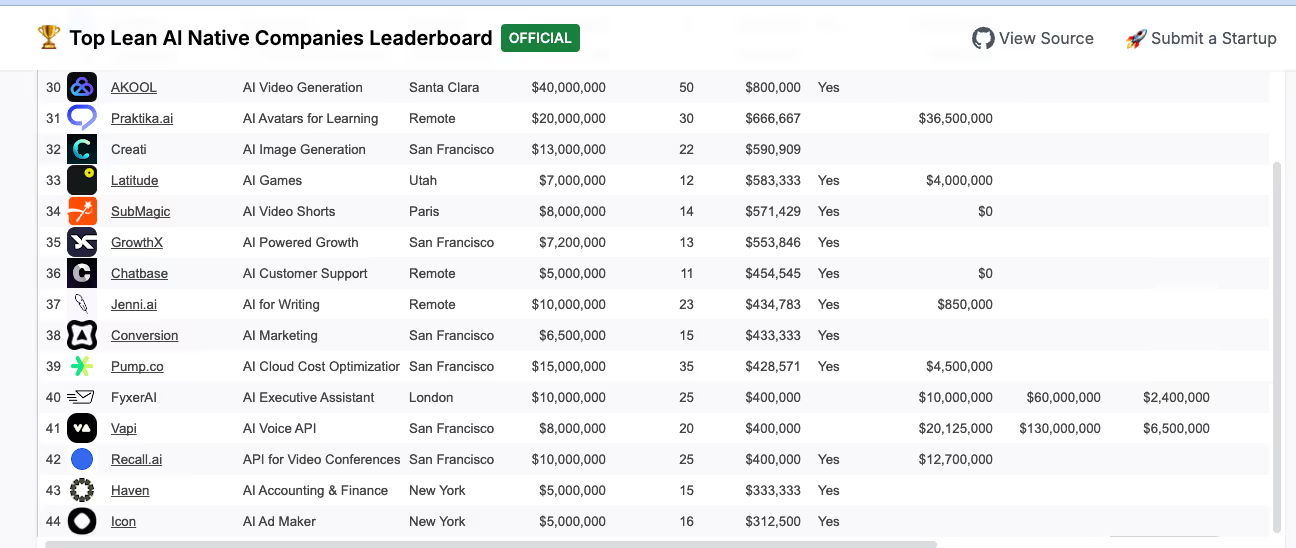In the first boom of “AI companies,” the playbook looked a lot like the cloud software playbook that came before it. Find a broad use case. Build fast. Raise faster. Ship a platform before you have a product. Promise automation; deliver dashboards.
But what we’re seeing now—the real second wave of AI-native software—is something quieter and more precise. It’s not about large language models or billion-parameter bragging rights. It’s about small, applied intelligence—products that make one specific team measurably better at one specific thing.
And that shift changes everything about go-to-market strategy.
Because selling “AI” is no longer enough. Everyone sells AI. The question is: can you prove it works, quickly, undeniably, and with a return that’s impossible to argue with?
1. 90 Days to Proof or Irrelevance
The psychology of the modern AI buyer is skepticism wrapped in curiosity. They’ve been burned by vaporware and shiny demos that never survived contact with production.
So the new currency is proof. The POC isn’t a checkbox—it’s your first and only audition. If you can’t deliver measurable lift in 90 days, you’ve lost the room. The best AI-native companies design for fast evidence: one clear KPI, one experiment, one outcome worth bragging about.
The pattern is clear: Prove it, then price it.
2. Value Attribution Is the North Star
There’s a reason “ROI” has become the only acronym that still cuts through AI hype.
In the modern enterprise, if you can’t tie usage directly to a business metric—speed, accuracy, revenue, cost reduction, risk mitigation—you won’t survive procurement.
You’re no longer competing against other startups. You’re competing against Excel, existing workflows, and the CFO’s skepticism.
That means every AI-native GTM strategy must build toward an undeniable line of attribution: a before-and-after that withstands executive scrutiny.
3. Time-to-Value Is the Silent Killer
There’s a hidden clock that starts the moment your contract is signed.
Every day that passes before your buyer sees value is a day closer to churn.
AI-native companies that win understand this. They pre-train models. They preload context. They eliminate friction. The customer doesn’t experience setup—they experience lift.
The product teaches its own worth faster than the sales team can explain it.
4. The Age of Depth Over Breadth
Every wave of technology has its pendulum swing. In cloud software, success meant scale—serving the broadest market possible. But in AI, the physics are reversed: precision beats reach.
The most successful AI-native companies are not generalists; they’re artisans. They go narrow, deep, and context-heavy.
Why? Because intelligence compounds within context. A sales forecasting model trained on manufacturing data doesn’t help a healthcare company. A generative writing tool built for lawyers is useless to realtors.
Depth creates defensibility.

5. Vertical Is the New Moat
“Horizontal AI” is a feature. “Vertical AI” is a business.
Owning a vertical gives you better data, more repeatable workflows, and faster learning loops. It makes your story tighter and your moat wider.
It’s how the best AI-native players are avoiding the race to the bottom—by building expertise that’s too contextual to copy.
6. In-Person Is the New Digital
For all our talk about automation, the deals that matter are still closed in person.
AI-native marketing that wins looks a lot like field marketing from the early SaaS days: workshops, roadshows, proof-of-concept clinics. The irony is beautiful—the more advanced the technology, the more human the trust-building needs to be.
Because AI doesn’t sell itself. People do.
7. Pricing That Fits on a Napkin
If your pricing model requires a spreadsheet, you’re doing it wrong.
AI-native buyers are fatigued by token tiers and usage multipliers. They want clarity and predictability. “$X per workflow automated” works. “$Y per seat” works.
Complexity kills deals. Simplicity builds trust.
8. The One Magic Demo Moment
Every transformative product has it—a single, visceral moment when disbelief turns into conviction.
For AI-native software, that moment is sacred. It’s not a feature tour; it’s theater. The best teams choreograph their demo around a human reaction—the gasp, the laugh, the pause before “wait, can you do that again?”
Because in the age of automation, wonder still sells.
9. The Story of Augmentation
The future doesn’t belong to the companies promising replacement. It belongs to the ones promising augmentation.
“AI that helps you work smarter” beats “AI that makes you redundant.”
The best stories in AI are empathy stories—humans and machines learning to work together, not compete. It’s the difference between fear and fascination.
10. AI Gets You in the Door; ROI Closes the Deal
AI creates curiosity. ROI creates conviction.
Early-stage founders confuse attention with traction. But in the modern buyer journey, AI gets you the first meeting. Your domain expertise, credibility, and proof get you the next ten.
Your pitch deck can say “AI.” Your renewal deck had better say “revenue.”
11. Fans, Not Just Users
The early adopters you win over today will determine whether your company survives the next funding cycle.
Treat your first 50 customers like design partners. Co-build. Co-market. Co-sell. Evangelism beats expansion budgets every time.
The best AI-native companies grow because their users need them to win.
12. Differentiate, Then Simplify Everything Else
Every AI-native company needs one or two sharp differentiators—edges that no competitor can claim. Everything else? Integrate it, outsource it, or wrap it.
Complexity is the enemy of speed, and speed is the only moat that matters in a market evolving this fast.
The Emerging Rules Beneath the Rules
The next generation of AI-native companies are rewriting the go-to-market bible. And their quiet consensus looks something like this:
- Data moats beat model moats.
Proprietary data pipelines, not architectures, are the new defensibility. - Integrations are distribution.
The fastest route to adoption is embedding in the tools customers already use. - Trust is a feature.
Governance, explainability, and security aren’t checkboxes — they’re product pillars. - Narrative drives market share.
Thought leadership isn’t PR; it’s pre-sales. The companies that define the category win it. - Customer co-ownership beats lock-in.
When customers help train your product, they never want to leave it. - Humans still matter.
“Human-in-the-loop” isn’t a disclaimer—it’s a maturity signal. - Product-led growth is no longer optional.
The best products sell themselves through data, usage, and proof—not ads. - Transparency compounds trust.
The companies that show how their AI works will outlast those that hide behind jargon.
The Closing Thought
The companies that will define this era of AI aren’t the ones shouting the loudest about intelligence.
They’re the ones quietly — and consistently — selling confidence.
Confidence that the product actually works in the messy reality of a customer’s workflow, not just in a vendor’s demo environment.
Confidence that it’s safe, compliant, and won’t turn into a career-risking headline for the ops leader who signs the contract.
Confidence that it delivers measurable lift fast — not theoretical value, but real KPIs tied to revenue, efficiency, accuracy, or cost reduction.
Confidence that AI augments the people who rely on it, instead of threatening them or burdening them with another dashboard, another login, another layer of noise.
That’s the meta-shift revenue leaders are waking up to.
Because in this new world, selling “AI” is table stakes. Everyone has a model. Everyone claims intelligence. Everyone is “powered by LLMs.”
But selling trust — provable performance, transparent logic, predictable outcomes, accountable humans in the loop — that’s the new frontier.
And it’s where the real separation in the market is happening.
The GTM organizations that win will be the ones who understand this:
You’re not asking a buyer to believe in artificial intelligence.
You’re asking them to believe in your ability to deliver value with it.
That’s the real sale.
That’s the modern differentiator.
And that’s where this next wave of AI leaders will stake their claim.




